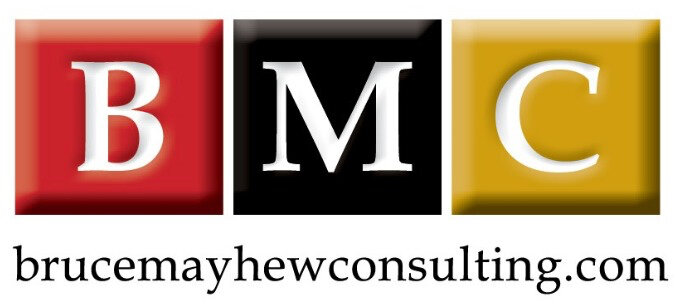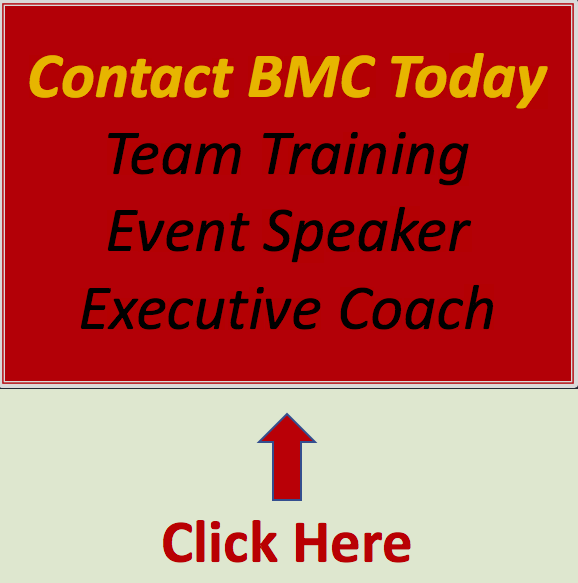Almost No One Is Born A Great Leader
/Almost no one is born a great leader, but I am confident anyone can become one.
Even those few internationally recognized leaders like Alan Roger Mulally* who learned leadership qualities and values from his parents and other role models while growing up have had to work hard to become great leaders. Mr. Mulally freely shares how he studied, read, talked with, listened to, surrounded himself with other strong leaders, practiced, failed and learned from his mistakes on his journey.
If you are reading this article you are interested in being a great leader. In fact you may already be a good leader and want to continue your own journey to become a great leader and help the leaders who report into you. On your journey I’m sure you have already read or listened to great speakers about how you can improve your skills. Maybe you have even read some of my other articles or heard me speak at a conference.
As with everything I know of there is a positive and a negative; a good and bad; a pro and a con. So, for this article I want to do something different than my usual approach to discuss what great leaders should do. In this article I want to discuss challenges… or more specifically, three challenges that often destroy careers for people who want to be, could be and even should be great leaders.
What Makes A Flawed Leader?
1. May be promoted before they are ready.
Far too often people are hired or promoted because they have excelled at a specific task or a specific technical skill. Top performers are often rewarded with a promotion and more responsibility. The challenge is that while it is great they are a top performer, that doesn’t prepare anyone to lead others. If you have a top performer I encourage you to offer them leadership training before you promote them.
Being a great leader means you will have to be a coach and mentor who creates a vision and inspires others to be their best as a team. You have to listen to others, make compromises, build trust and nurture loyalty in others. But being a top performer doesn’t mean you have learned those skills. In fact, many top performers are very self-motivated with a high degree of technical knowledge and skills. But, becoming a leader usually means stop doing some or all of their skills that got them their promotion.
When people are hired or promoted into leadership roles primarily because they have specific technical skill instead of their specific leadership skill, we will not only have individuals that don’t reach their potential. When great employees are promoted without learning the leadership skills they need we also have teams and whole companies that don’t reach their potential. Those leaders with only great technical skill often become bottle-necks of information because they feel they have to ‘do’ the ‘doing’ like they did before they became official leaders instead of inspiring and coaching others.
This doesn’t mean they don’t have great leadership skills… in most cases they do. They just have never had to use, build and rely on them much in the past when they were a team member versus a team leader. That is why its important to offer high-potential people leadership training before you promote them. In fact, I would suggest everyone receive some leadership training.
2. Don’t build trust
There are many ways to build or destroy trust. Whether you are a leader or a co-worker, the catalyst for trust are the same. And while trusting others and being trustworthy is important for everyone, the need to build trust is absolutely critical for great leaders.
Building trust is a two-way street. Great leaders have to be trustworthy; their team members have to learn that they can trust them. Great leaders also have to learn to trust the people within their team. This is where being a great coach and mentor come in handy because highly motivated people may not have had to trust others much in the past, but now they are leaders building trust and being trustworthy are key indicators of success.
When employees don’t trust their leader they move into protection mode. This makes perfect sense and we can not blame employees when they do this. When people go into protection mode their performance, creativity and loyalty usually decline for a whole list of reasons.
Here are some of the key attributes of people who don’t build trust:
They don’t give credit to others. One of the worst things a leader can do is to not encourage their team members when they have done a good job. However, trust destroying behaviour is eclipsed if they take credit for someone else’s work.
They don’t take responsibility when they made a mistake. If a leader doesn’t take responsibly for a mistake, or worse yet covers it up or blames others, team members will not feel they can come forward when they make a mistake… and we all make mistakes from time to time.
Don’t share information. There are many reasons for this, for example they often believe knowledge is power and may want to keep themselves as a critical, important resource.
It is always their way or no way. When their ideas or approach is always the only way forward it is demoralizing, making others feel irrelevant and incompetent. This is even worse if they always re-do everyone’s work.
Professional development is a luxury never or rarely offered and/or not taken seriously, especially is not in-line with the way they want to work.
Trust is built when we listen to each other with the intent of understanding each other. When we listen to each other we are demonstrating respect. Two of the greatest rewards we all have is a desire to be seen as competent in the work we do and that our work is relevant. We all want to feel we make a difference and are respected for our contribution and poor leaders often are not good at helping others feel their work is important and they are making a difference.
Leaders have to help others be as successful as they were earlier in their career. This is a more difficult’switch’ than it sounds and every leader I know has had to get help to unlearn some trust behaviour and learn new trust behaviour
3. Are a bottleneck for important decisions or information
A poor leader is a bottleneck who slows down any and all decision-making process.
In today’s fast paced, highly technical world it is near impossible for a leader to be able to know everything about everything and to do everything about one thing. If this is the case, it is likely that by being a bottleneck they are slowing down decisions and putting themselves, their team and the company at risk of falling behind. Here are some of the key attributes of people who are a bottleneck for important decisions or information:
Don’t empower or teach autonomy within their team. Another of the greatest rewards that resonate with all of us is having some control of what we work on and when.
Try to decrease risk of making a bad decision by establishing an ever-expanding list of rules and procedures. Besides being in full control, this is one of the most efficient ways to hinder and disable a team.
Waste time and miss opportunities. Every person, every department and every organization has limited time and resources. If a leader tries to impact all decisions, they rarely succeed in any of them.
Increase overall risk of success because of their slow-action and non-action, and therefore missing opportunities
Because individuals become demotivated, they leave. One of the signs of a dysfunctional leader is high-turnover because people around them quit
They, their team or their company fall behind in a fast-paced culture / market
Decision makers see decisions as a path that can be fine-tuned along the way as information, opportunity and needs change.
They may feel knowledge is their reward for hard work - but really knowledge is a tool and if we keep it from our talented team we are handicapping them and hurting the success of the project - and therefore hurting our own success.
Conclusion / Solution
Leadership today is much different than it was 10 years ago when Millennials were young, 25 years ago when Gen Xers were young and especially 40 years ago when Boomers were young. Leadership is complex and great leaders are aware of the behaviours that can derail their success and the success of the people and company who depend on them.
Today’s leaders need qualities and skills that unify every team and inspire every individual. Because almost no one is born a great leader, great leaders today are proactive not only with the vision and values of their company and team, they are proactive in their own success and the success of their team members.
A few years ago I was giving a presentation discussing Leadership and Generational Differences. A young 30-something Millennial asked “What can I do to learn how to be a great leader?” My conclusion to this article is the same advice I gave her. If you are looking to be / become a great leader I recommend you read as many books on leadership and related topics like Difficult Conversations and Change Management as possible. There is no one book that has it all. I also recommend you find other sources and add them to your education list. Sources like Ted Talks, going to conferences, speaking with other leaders you know, asking to take leaders you don’t know out for a coffee, reading magazines and so on.
Great leadership is a life-long journey. The world is changing around us and change is getting faster and faster. How we need to lead is also changing. Just like how leadership is different now than it was 20 years ago, leadership is going to be different again in 10 years from now.
Thanks for reading.
BONUS: 3 More Bad Practices.
Flawed leaders:
Don’t allow people to bring their uniqueness / individuates to work.
They are not interested in getting to know what motivates and inspires each of their team.
Don’t give people an opportunity to broaden their experience by working on new projects and / or with different people.
Be well. Happy communicating and happy leading.I hope this article will help you be a great leader.
Bruce
Reference Foot Notes:
* Alan Roger Mulally is an American aerospace engineer and manufacturing executive. He is the former President and Chief Executive Officer of the Ford Motor Company and before that was the executive vice president of Boeing and the CEO of Boeing Commercial Airplanes (BCA).
An other article you might like.
Read How to Prepare for a Job Interview Level 1
About Bruce and Bruce Mayhew Consulting.
Bruce is Corporate Trainer, Keynote Speaker and Executive Coach.
Bruce Mayhew Consulting specializes in customized Email Etiquette Training, Leadership & New Leadership Development, Generational Differences, Time Management Training and other soft skills training solutions in Toronto and across Canada. Bruce is also an Executive Coach to a few select clients.
Bruce is an experienced motivational speaker in Toronto and has inspired audiences across Canada and within the USA and the UK. Bruce works hard to always make sure your training event, conference, retreat, or annual general meeting is a success.


























